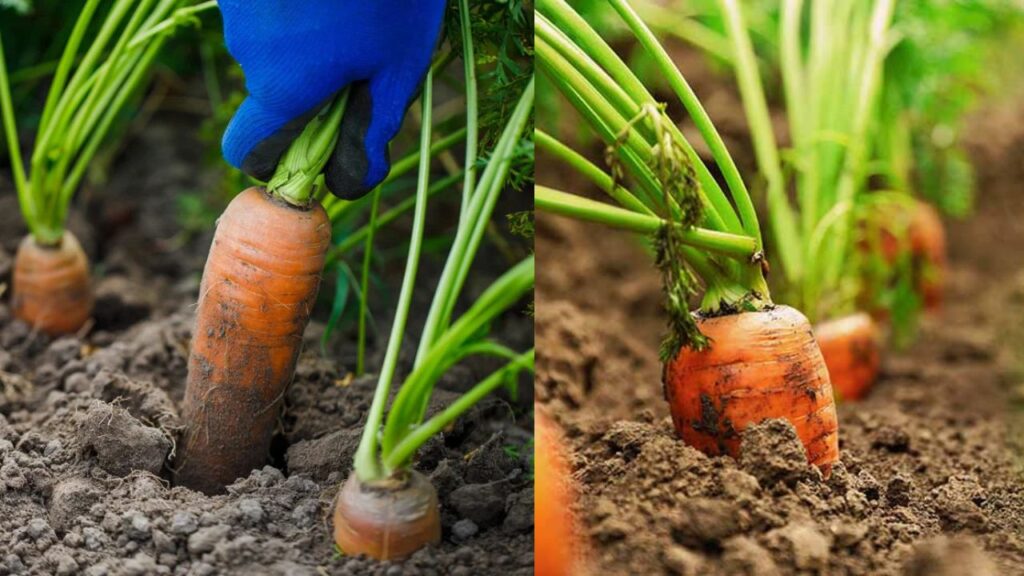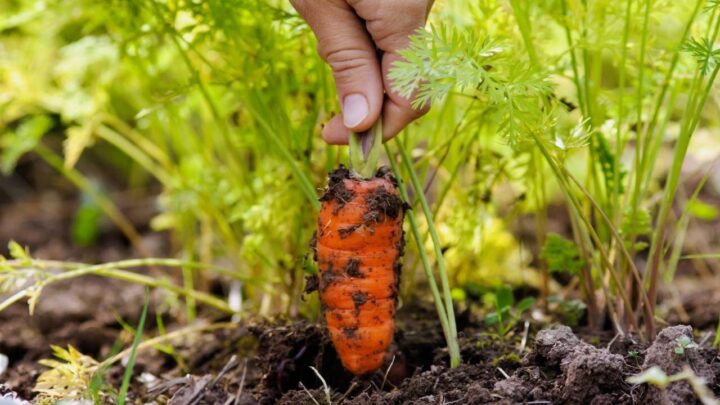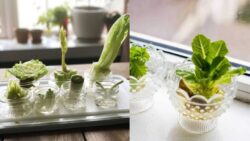Carrot Stems Regrowth Trick – Learn how to regrow carrots from leftover tops and enjoy an endless supply of fresh greens and new roots right from your kitchen or garden. This simple, eco-friendly hack turns waste into a sustainable harvest.

Can You Really Regrow Carrots from Stems?
Yes, you absolutely can! While carrots won’t regrow a full root from the stem, the tops can sprout new greens that are both edible and decorative. With a bit of patience and proper care, these greens can also produce seeds, helping you grow new carrot plants from scratch. This method is perfect for beginners who want to practice sustainable gardening and reduce kitchen waste naturally.
 Grow Tomatoes Faster Than Ever! Home Gardening Secrets Every American Should Know for Early Harvest
Grow Tomatoes Faster Than Ever! Home Gardening Secrets Every American Should Know for Early Harvest
Why Grow Carrots from Stems?
Growing carrots from stems isn’t just fun — it’s surprisingly useful. You can harvest flavorful greens for salads or use them in soups, smoothies, and garnishes. Plus, this method helps you:
- Save money by regrowing from scraps
- Reduce kitchen waste
- Enjoy a continuous harvest indoors
- Teach kids about plant life cycles
- Decorate your home with green carrot tops
Step-by-Step Guide to Turning Carrot Stems Into Endless Harvests
- Step 1: Choose Fresh Carrot Tops
Select carrot tops with about one inch of the orange root still attached. Avoid wilted or dried-out stems — they won’t regrow well. The fresher the top, the faster it will sprout new growth. Wash gently to remove any soil or residue before use.

- Step 2: Prepare a Shallow Water Dish
Place the carrot tops in a shallow dish filled with just enough water to cover the bottom part. Position them in a bright, warm spot such as a windowsill. Change the water every 1–2 days to keep it fresh and prevent mold.
- Step 3: Wait for Sprouting
Within a few days, you’ll notice small green shoots and fine roots emerging. This means the carrot top is actively regrowing. Keep rotating the dish daily so all sides receive even sunlight. Avoid direct harsh sunlight that can dry the tops out.
- Step 4: Transplant to Soil
Once roots reach around 1–2 inches long, carefully plant the tops into a small pot or garden bed with loose, well-drained soil. Cover only the bottom part, leaving the green shoots above the surface. Water regularly but avoid overwatering.
- Step 5: Nurture and Harvest
Place your potted carrots in partial sunlight and keep the soil slightly moist. Within a few weeks, you’ll get lush greens that can be trimmed and used in cooking. These greens will continue regrowing after each cut — giving you a steady supply.
- Step 6: Collect Seeds for Next Crop
If you let the greens mature, they may produce small white flowers that later turn into seeds. Once dried, you can store these seeds and plant them to grow full carrot roots — a complete zero-cost garden cycle!
 Regrow Cabbage From Scraps! The Easy, Eco-Friendly Gardening Hack Every American Is Trying
Regrow Cabbage From Scraps! The Easy, Eco-Friendly Gardening Hack Every American Is Trying

Best Conditions for Carrot Stem Growth
For the healthiest regrowth, carrots need moderate sunlight, clean water, and proper drainage. The key is consistency. Avoid sudden temperature changes, and make sure to move the plants indoors during extreme cold or heat. Using organic soil with compost can further boost leaf growth and root formation.
Extra Tips for High-Yield Regrowth
- Use rainwater or filtered water to prevent chlorine damage.
- Trim old leaves regularly to encourage new shoots.
- Combine carrot tops with other regrowable veggies like celery or lettuce for variety.
- Add a pinch of natural fertilizer once every two weeks.
- Grow several carrot tops together for a fuller garden look.
FAQs
Can I regrow full carrots from the tops?
No, you can’t regrow the orange root from tops, but you can grow lush greens and collect seeds to start new plants.
How long does it take for carrot tops to sprout?
Usually within 3–5 days in water. Once transplanted to soil, you’ll see stronger growth in about 2 weeks.
Do carrot greens taste good?
Yes, they have a mild, parsley-like flavor and are great for pestos, soups, or smoothies.
Can I grow carrot tops indoors?
Absolutely. They thrive near sunny windows or under LED grow lights and make excellent indoor decor too.
Your carrot stems may look like leftovers, but they’re actually the start of something new. With patience, care, and a little creativity, you can turn those scraps into a thriving green corner — proving that even the smallest parts can bring endless harvests and joy.




